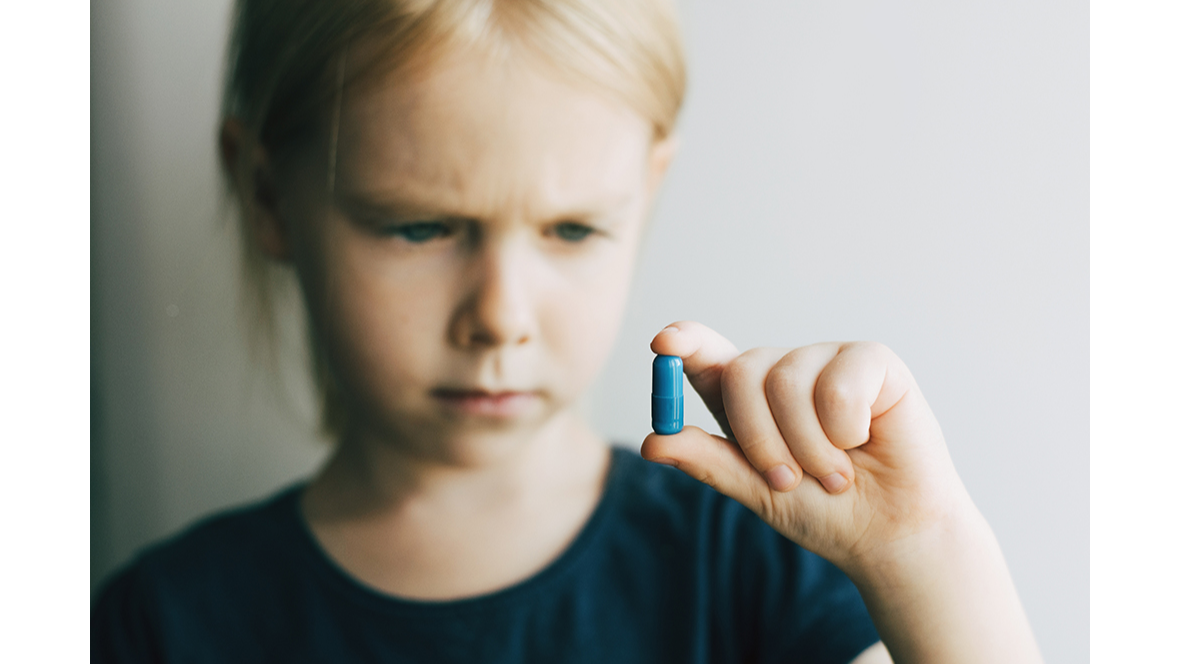
Over three million American children and adolescents remain vulnerable to the potential dangers associated with prescribed stimulants. A recent study published in Pediatrics reveals a startling threefold (299%) surge in calls to poison centers due to drug-related adverse events from 2001 to 2021. Even more concerning, children under the age of 6 faced double the number of severe outcomes and were hospitalized at a rate three times higher than their 6-19-year-old counterparts.[1] Both the subjectivity of the diagnosis and the adverse effects of these drugs on the young have raised serious concerns about the widespread use of them, according to the Citizens Commission on Human Rights International, a mental health industry watchdog.
The study authors, from Nationwide Children’s Hospital in Columbus, Ohio, believe a sharp uptick in stimulant prescriptions, which began in 2009, is a likely factor, which just so happens to coincide with the U.S. Food and Drug Administration’s (FDA) approval of guanfacine. According to the study findings, children who took guanfacine were more than five times as likely to be admitted to a hospital than those who took amphetamines or related drugs. Guanfacine carries a warning for circulatory, metabolic and/or emotional disturbances.
It is important to underscore the broader concerns surrounding ADHD diagnoses and the use of such psychiatric drugs. This includes the fact that there are no blood tests, brain scans, or any scientific means by which to diagnose ADHD or any mental disorder. Parents have learned, albeit too late, that when a child is arbitrarily diagnosed and subjected to psychostimulants or other psychiatric drugs, it’s literally a game of Russian Roulette. The risks are high and at stake is the life of their child.
CCHR has documented how powerful stimulants, which are being fed to children and adolescents like candy, are contributing to drug overdoses; acts of violence, including murder; suicide; and cardiac failure leading to death.
Statistics from 2020 that CCHR obtained from IQVia’s Total Patient Tracker database show that 3.15 million 0-17-year-olds were prescribed psychostimulants, of which 58,091 are ages 5 or younger. A further 1,750,481 were between the ages of 6 and 12.[2]
In 2022, the Drug Enforcement Agency (DEA) issued a warning to manufacturers of ADHD drugs that it was concerned about “aggressive marketing practices” by companies–in particular, telehealth providers that could be driving excessive prescriptions.[3]
The ADHD drug atomoxetine carries a long list of serious side effects, including psychosis, anger, or aggression, and has a black box warning about the risk of suicidal thoughts.[4]
Such psychosis and violent behavior, which the DEA believes can also be induced by psychostimulants, is linked to violent killings. Four U.S. teenagers, one aged 14, two 15, and one 16, committed murderous acts while taking the stimulant Ritalin (methylphenidate), some combined with an antidepressant, killing 8 and wounding 36, as documented in CCHR’s report, Psychiatric Drugs Create Violence & Suicide.
According to a Swedish study, a search of an international safety database for one methylphenidate manufacturer, found reports of 21 cases of attempted suicide and six suicides, in addition to 25 reports of suicidal ideations in patients aged 6-48 years, 56% of whom were children younger than 16 years.[5]
Ten-year-old Harry Hucknall from the UK was prescribed a stimulant and antidepressant for his boisterous behavior. One Sunday evening, he kissed his mother and older brother goodnight before going upstairs to his bedroom where he hanged himself with a belt from his bunk bed. The coroner said Harry had been given “two, powerful, mind-altering drugs,” ruling out deliberate suicide.[6] “We as a society try to stop children dabbling in street drugs and yet a child with this label of ADHD is prescribed mind-altering drugs of a very powerful nature–the full consequences of which I do not believe are fully understood,” Coroner Ian Smith, said.[7]
Death is another risk. According to the FDA in 2006, there were 51 deaths among children and adults taking prescription stimulants in the U.S. The UK Medicines and Healthcare Products Regulatory Agency (MHRA) that same year said nine children had died among a smaller population on ADHD drugs. The cause of death for two of the nine children was specifically heart-related: one had a heart attack and a second had an enlarged heart. One was recorded as a “sudden death.” One died of a hemorrhage in the brain and another of a swelling in the brain, two committed suicide and the last died of neonatal respiratory distress syndrome, presumably the mother was on the drugs.[8]
In May this year, the FDA also acknowledged that stimulants can be addictive. The agency is now requiring this information to be added to its black box warning on all stimulant drugs.[9]
Yet another aspect parents may not be aware of is, according to Optometrists Network, adverse visual problems that can be misdiagnosed as ADHD: “While children with 20/20 eyesight may be able to see distant objects clearly, they can still suffer from vision problems that affect their learning performance. These children often present with specific behaviors because their visual systems simply cannot keep up with the demands of the classroom and curriculum.” Further, in many cases, these behaviors lead teachers and parents to believe that the child suffers from ADHD.”[10]
Additionally, “Fifteen out of the eighteen criteria for a diagnosis of ADHD overlap with behaviors that can present from a visual problem.” A child who has been prescribed a medication for ADHD may experience an increase in their visual problems–leading to increased difficulty to maintain attention in class.
CCHR says there is compelling evidence to hold manufacturers and prescribers accountable for any damage the drugs may inflict and to prohibit the use of these drugs on children and youths. It warns parents to withdraw children from psychotropic drugs only under medical advice and supervision.
[1] childrenshealthdefense.org/defender/emergency-calls-adhd-medication-errors-guanfacine-tenex/; publications.aap.org/pediatrics/article/doi/10.1542/peds.2023-061942/193956/Pediatric-ADHD-Medication-Errors-Reported-to
[2] www.cchrint.org/psychiatric-drugs/people-taking-psychiatric-drugs/
[3] www.dailymail.co.uk/news/article-11593463/DEA-warns-ADHD-prescription-bad-opioid-crisis-stinging-letter-pharma
[4] childrenshealthdefense.org/defender/emergency-calls-adhd-medication-errors-guanfacine-tenex/; www.medicalnewstoday.com/articles/drugs-strattera-side-effects#serious-side-effects
[5] www.24-7pressrelease.com/press-release/9094/ritalin-the-cover-up-of-suicides
[6] www.bbc.com/news/uk-england-cumbria-12924961
[7] www.dailymail.co.uk/health/article-2141044/ADHD-Ritalin-prescriptions-soaring-experts-warn-effects.html
[8] www.theguardian.com/society/2006/feb/11/health.medicineandhealth
[9] fox59.com/business/press-releases/ein-presswire/634134443/fda-finally-adds-addiction-to-black-box-warning-on-adhd-drugs/?fbclid=IwAR0M3g8DOuVUA1VrUR3wZ32v9tPZvEiOIuaUqiCDuH_BuI97-YeXeGHlsoE citing www.fda.gov/drugs/drug-safety-and-availability/fda-updating-warnings-improve-safe-use-prescription-stimulants-used-treat-adhd-and-other-conditions
[10] www.optometrists.org/vision-therapy/vision-therapy-for-adhd/visual-side-effects-of-adhd-medication/
Citizens Commission on Human Rights International
media@cchr.org
+13234674242
6616 Sunset Boulevard
COMTEX_440983395/2764/2023-09-26T11:07:58
